PROMINAR 12mm with the α NEX-7
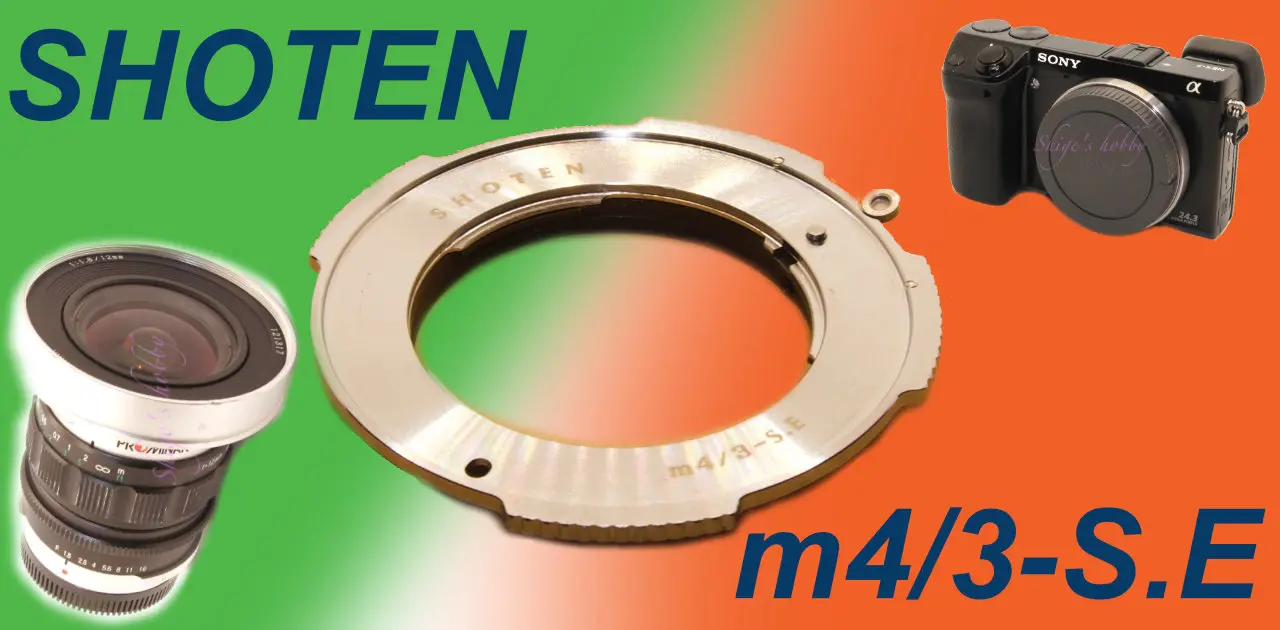
Using M43 lenses with Sony E bodies (2)
A review and photo examples of using the KOWA PROMINAR 12mm F1.8 with the SONY α NEX-7.
- Please see the disclaimer regarding advertising here.
- Italicized links in the text are advertisement links that take you to other sites.
- This is an irregular way to use a lens, and we would like to point out that anyone attempting similar photography does so at their own risk.
Table of contents
Gallery
- The sample photos were taken with the PROMINAR 12mm and SONY NEX-7.
Review
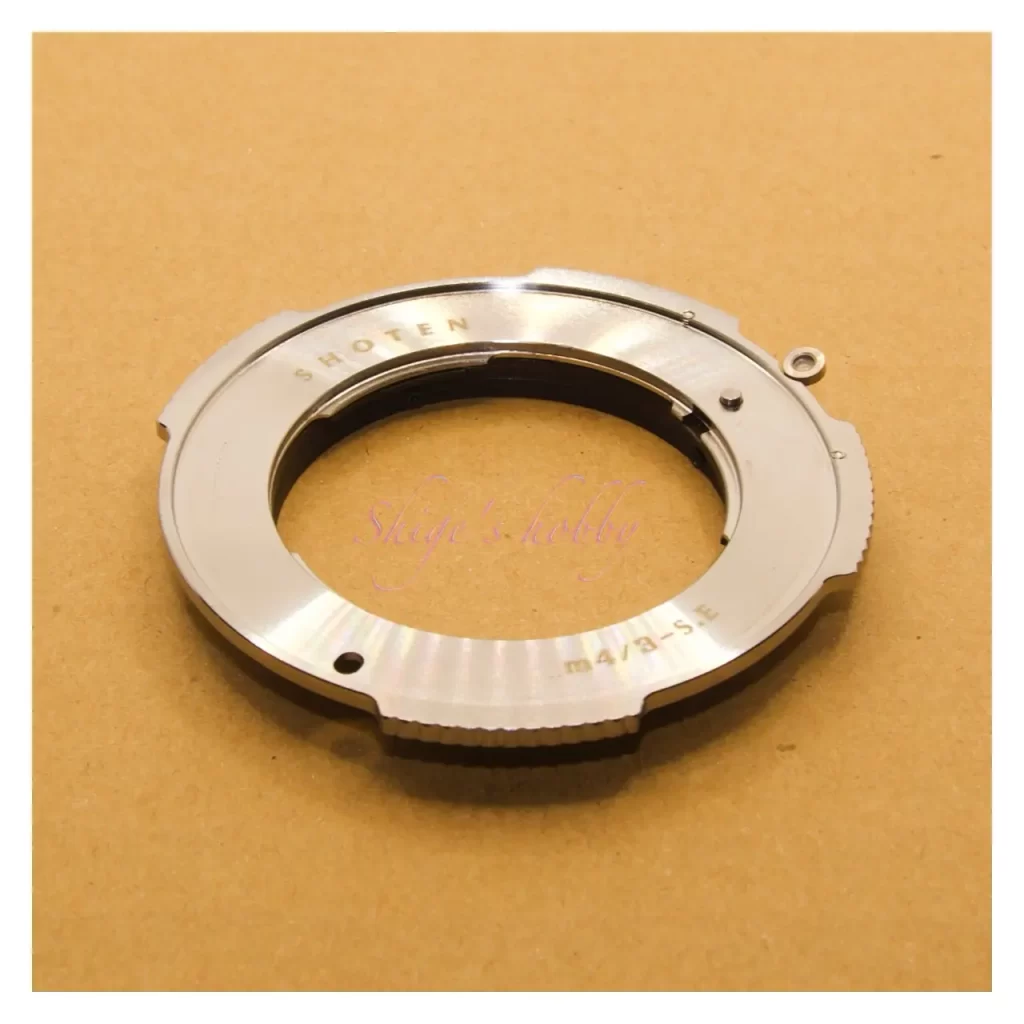
1.Overview
When using a Micro Four Thirds lens with a Sony E mount, a dedicated mount adapter is required.
The flange back of the Micro Four Thirds lens is 20mm, while that of the Sony E is 18mm, a difference of 2mm. Commercially available mount adapters only physically convert the mount shape.
With the technology available in 2024, due to the thickness of 2mm, an adapter that adds electronic contacts between the lens and camera and incorporates a circuit to convert electrical signals has not been realized.
Mount adapters currently available in 2024 cannot do the following, so the following problems occur with autofocus (AF) lenses provided by Olympus and Panasonic.
- AF cannot be used
- Electrical aperture cannot be controlled
- Some lenses have vignetting due to insufficient image circle
Specifications of the sensor and mount of Micro Four Thirds and Sony E
| Micro Four Thirds | SONY E | |
| Sensor size | 17.4mm × 13.0mm | 23.6mm x 15.8mm |
| Sensor diagonal distance | 21.72mm | 28.4mm |
| Flange back | 20mm | 18mm |
This time, we will report on the results of shooting with the KOWA PROMINAR 12mm F1.8 attached to a SONY α NEX-7 using the SHOTEN Mount Adapter m43-SE (Micro Four Thirds lens to Sony E-mount conversion), one of the mount adapters that converts the physical mount shape.
2.Usability
As for the balance when attached to the camera, because the lens is large, it is better when attached to the NEX7 than the LUMIX GM5. And it should be fine even on a body a little larger than the NEX7.
Actual photos taken with the NEX-7 show that when the PROMINAR 12mm F1.8 is used with the NEX-7’s 24-megapixel APS-C size sensor, the image becomes distorted and cannot be used beyond the horizontal 4424 pixels of Micro Four Thirds, even when stopped down to F4. In the vertical direction, practical image quality is maintained up to 4000 for an APS-C size sensor.
Therefore, if there is room in the sensor size, it may be possible to shoot square images up to 4424 x 4424 without any problems. We plan to test this separately with a Sony camera with a 35mm full-size sensor.
| PROMINAR 12mm | Shooting range (width x height pixels) | Percentage of APS-C sensor |
| Micro Four Thirds | 4424 x 3291 | 横 74% 縦 82% |
| SONY E | 6000 x 4000 | – |
| Practical focal length | 4424 x 4000 | 横 74% 縦 100% |
The gallery shows uncropped images.
Depending on the shooting conditions, there were some shooting results where image distortion, image disturbance, and color cast were unacceptable in the peripheral areas, so it does not mean that the entire range of the APS-C size sensor can be used in all scenes.
What it does mean is that if you choose the shooting location carefully, you can create an image using the entire range of the APS-C size sensor.
The change in focal length of the PROMINAR 12mm is as follows. When used with a Sony E and there is no vignetting, the lens has a focal length equivalent to 18mm, but when cropped practically, it has a focal length equivalent to 22mm with a shooting range that is close to a 4.4:4 square.
| PROMINAR 12mm | 35mm equivalent focal length | Conversion Factor |
| Micro Four Thirds | 24 | 2 |
| SONY E | 18 | 1.5 |
| Practical focal length | 22 | 1.8 |
This mount adapter is very thin, so you first attach the mount adapter to the lens, and then attach it to the camera body.
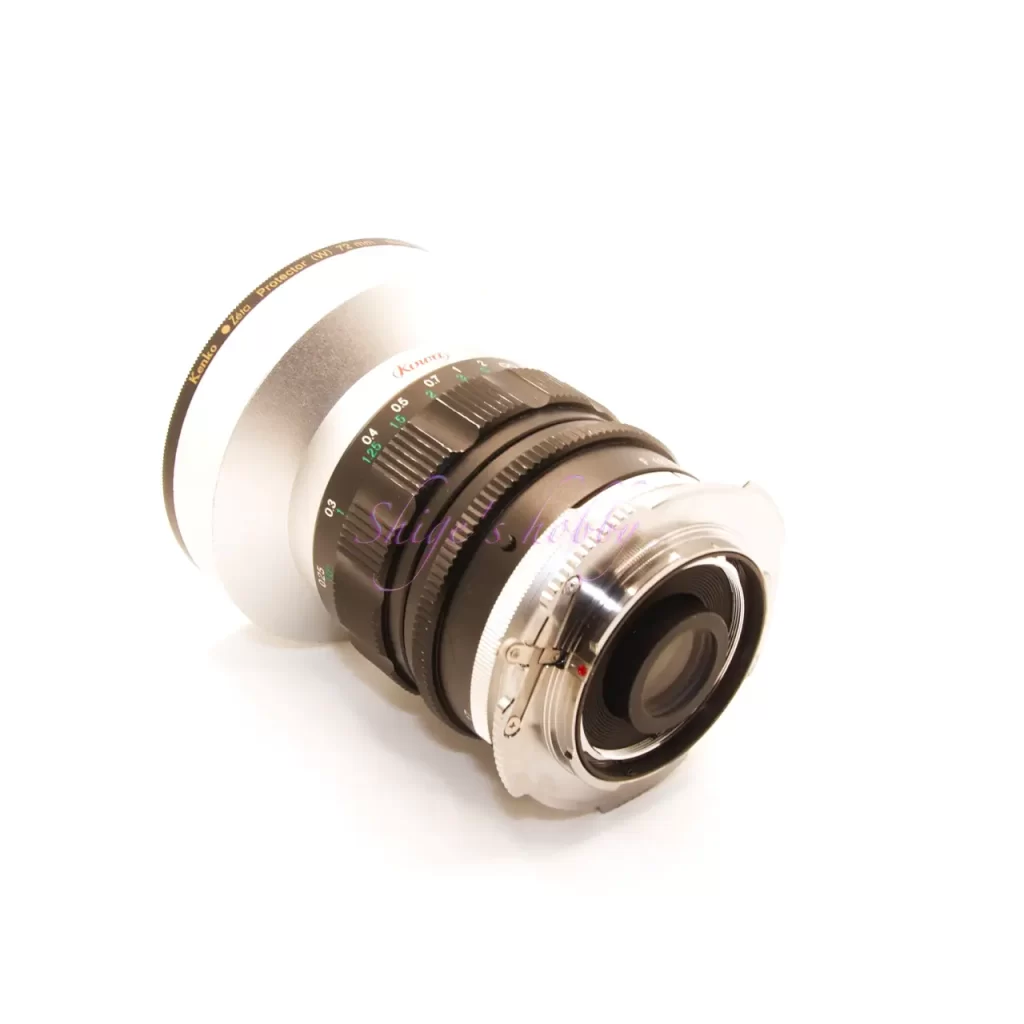
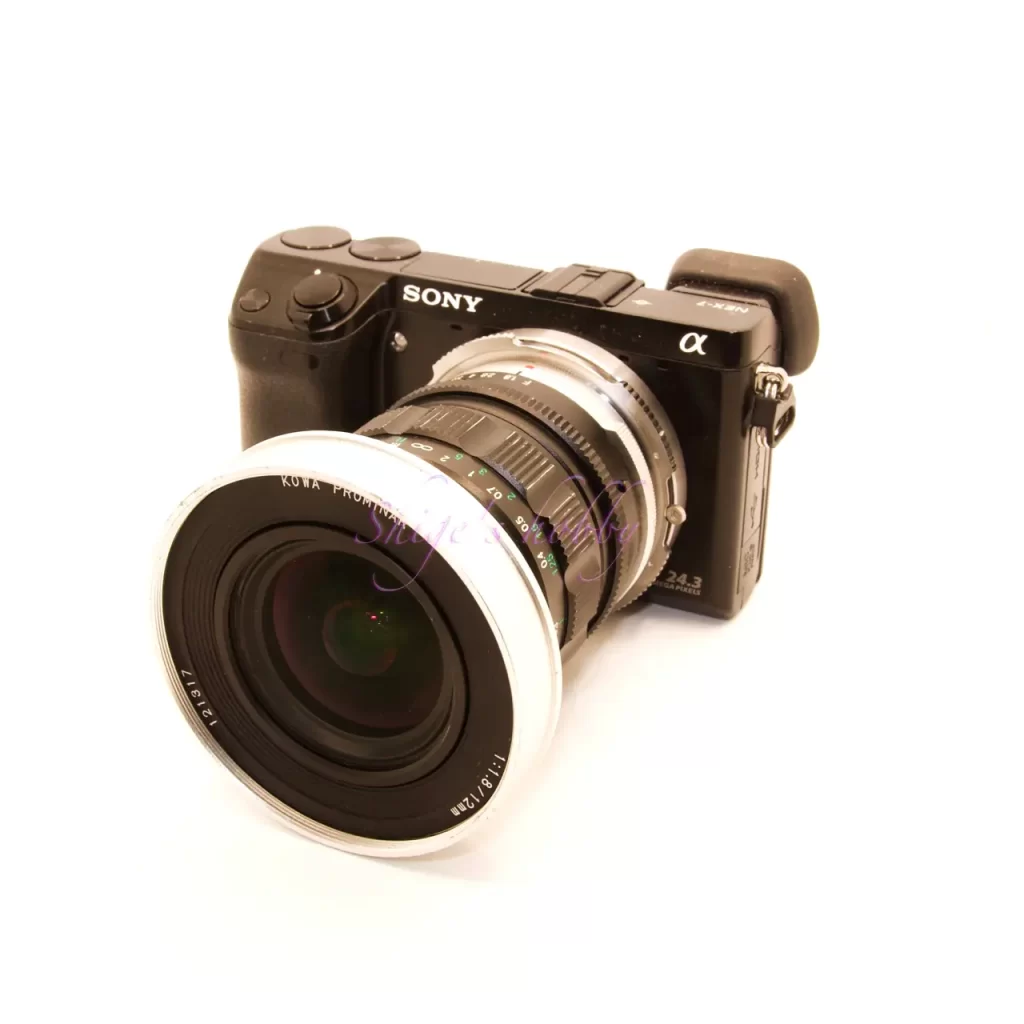
Once the lens and mount adapter are attached, attach the lens to the camera.
In reviews from previous users, I had seen information that the mount adapter was tight, but the mount adapter and lens I tested this time connected smoothly and could be removed smoothly as well.
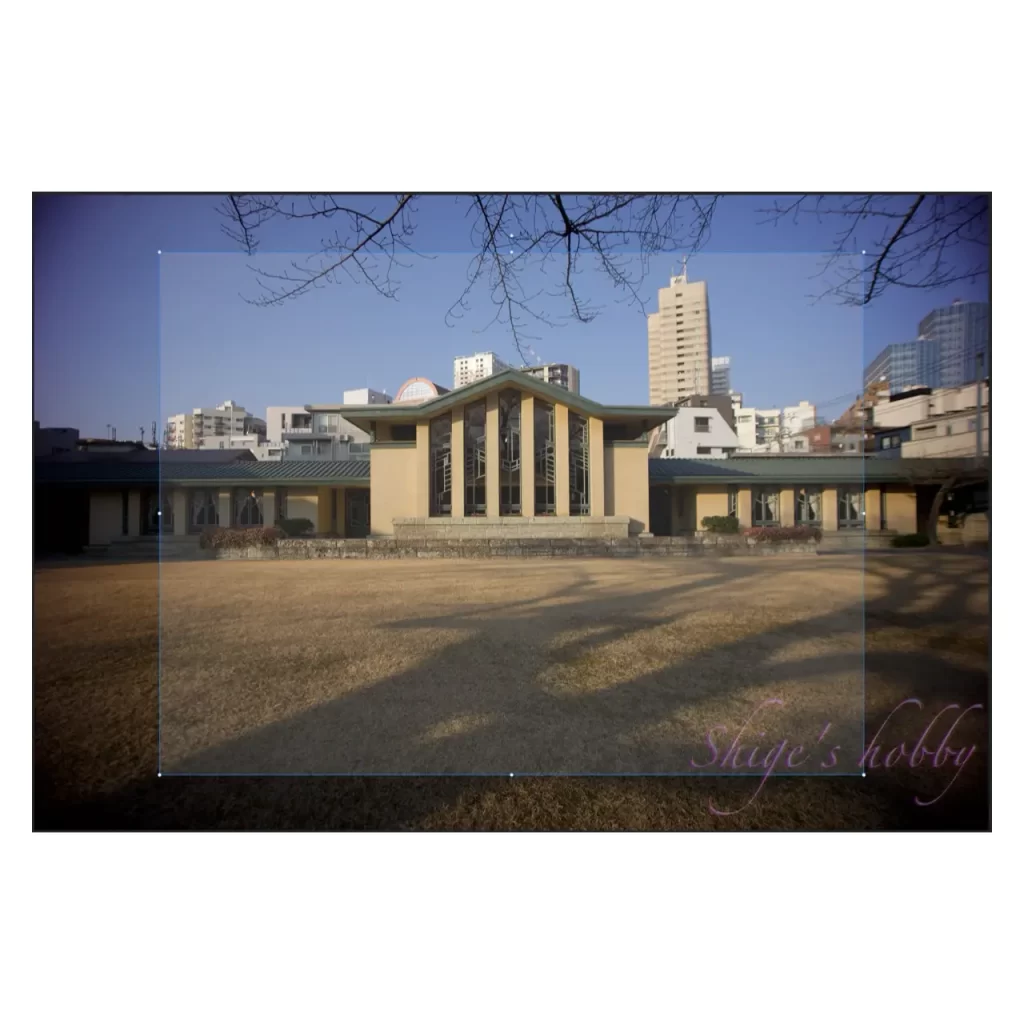

3.Add info.
As for Olympus (OM-SYSTEMS) lenses, the 9mm f8 Fisheye Body Cap Lens BCL-0980 seems like it should be usable because it is a manual focus lens with a fixed aperture, but when I actually tried to attach the lens to the mount adapter, it would not fit.
Observing the lens, I found that the mount of the BCL-0980 is plastic, and the tabs that connect it to the mount are thicker than the tabs on a metal mount. This is why it did not fit into the mount adapter, and it is likely that only the dimensions of the metal mount were taken into consideration when the mount adapter was designed.
The OLYMPUS Body Cap Lens for Micro Four Thirds BCL-1580, which has the same plastic mount, may also be difficult to attach.
Voigtlander has released six large aperture lenses for Micro Four Thirds, and since they are manual focus lenses and have a real aperture, they should be usable.
I have not tested any lenses other than the NOKTON 25mm, so there may be some lenses that cannot be attached, like the BCL-0980.
- 10.5mm F0.95 / 21mm
- 17.5mm F0.95 / 35mm
- 25mm F0.95 / 50mm
- 29mm F0.8 / 58mm
- 42.5mm F0.95 / 85mm
- 60mm F0.95 / 120mm
Kowa has released the following three lenses, which are manual focus lenses with real apertures and should be usable. As they have not been tested, there may be some lenses that cannot be attached, such as the BCL-0980.
- PROMINAR 8.5mm F2.8
- PROMINAR 12mm F1.8
- PROMINAR 25mm F1.8
In addition, it is thought that manual focus and actual aperture lenses made overseas can be used, but there may be some lenses that cannot be attached depending on the structure of the mount.
Specifications (reprinted from SHOTEN official website)
| Model name | m43-SE |
| Compatible Lens Mount | Micro Four Thirds Due to its structure, adapters that convert Micro Four Thirds lenses to Sony E-mount may not fit smoothly. Please understand that lenses from emerging manufacturers may vary slightly in size and fit, so there may be some stiffness, looseness, or slight play when fitting. |
| Compatible Camera Mounts | SONY E |
| Other specifications | Material: Brass Weight: Approx. 30g |
| remarks | When using, set the camera’s “Menu” – “Release without lens” to “ON.” |
| Notes | The lens cannot be electronically controlled. If an electronically controlled lens is attached, focusing and aperture adjustment may not be possible. Attach the adapter to the lens first, and then attach it to the camera. The lens cannot be attached while the adapter is attached to the camera or if there is a cap on the body side of the adapter. Micro Four Thirds lenses have a small image circle, so the corners of the screen may become black. |
Reference links
Update history
- 2024.1.25
Affiliate links
- Please see the disclaimer regarding advertising here.
- Italicized links in the text are advertisement links that take you to other sites.
- SHOTEN Mount Adapter m43-SE・Ads by Amazon
- SHOTEN Mount Adapter m43-SE・Ads by Rakuten
- PROMINAR 8.5mm F2.8 ・Ads by Amazon
- PROMINAR 12mm F1.8 ・Ads by Amazon
- PROMINAR 25mm F1.8 ・Ads by Amazon
- NOKTON 25mm F0.95 TypeII Micro Four Thirds Ads by Amazon
- NOKTON 10.5mm F0.95 Micro Four Thirds Ads by Amazon
- NOKTON 17.5mm F0.95 Micro Four Thirds Ads by Amazon
- NOKTON 42.5mm F0.95 Micro Four Thirds Ads by Amazon
- NOKTON 60mm F0.95 MFT Ads by Amazon
- SUPER NOKTON 29mm F0.8 Aspherical MFT Ads by Amazon
- 9mm f8 Fisheye Body Cap Lens BCL-0980 ・Ads by Amazon

![[商品価格に関しましては、リンクが作成された時点と現時点で情報が変更されている場合がございます。] [商品価格に関しましては、リンクが作成された時点と現時点で情報が変更されている場合がございます。]](https://hbb.afl.rakuten.co.jp/hgb/06ddf1d8.b245f6d5.06ddf1d9.44d5c3c5/?me_id=1202242&item_id=12291818&pc=https%3A%2F%2Fthumbnail.image.rakuten.co.jp%2F%400_mall%2Fmapcamera%2Fcabinet%2Fused_2485%2F3717019498007_1.jpg%3F_ex%3D128x128&s=128x128&t=picttext)
Leave a Reply